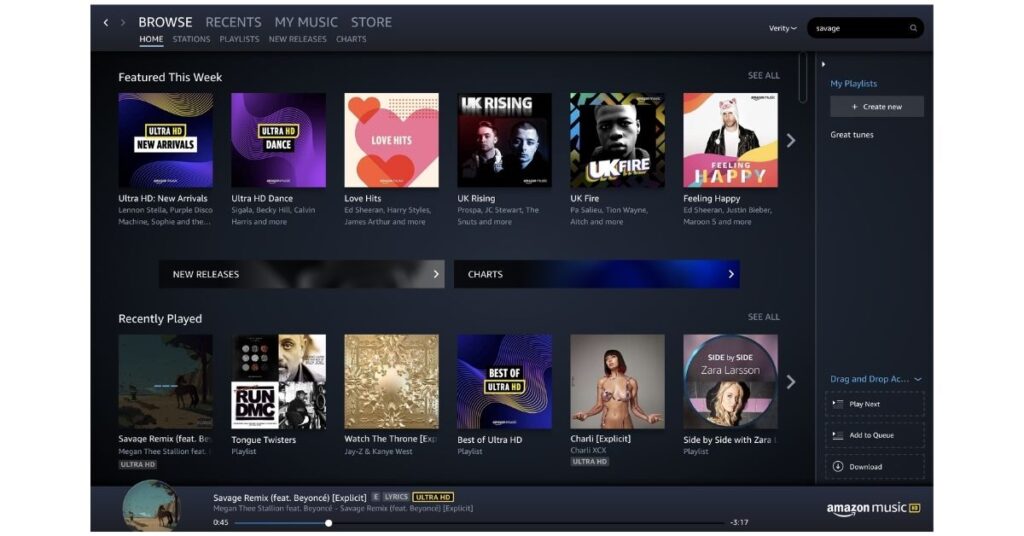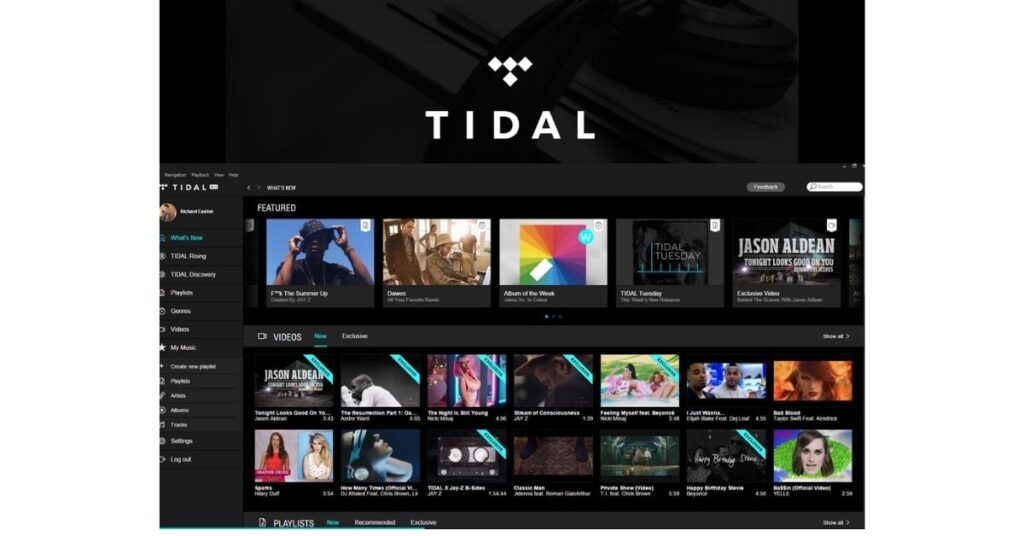Amazon Music HD vs Tidal – Tidal, and Amazon have a massive music library that is unrivaled by other popular streaming platforms such as Apple Music, Spotify, YouTube Music, or Pandora. All of these high-quality platforms deliver music at a high bit rate, which is claimed to make the music clearer and more realistic sounding.
Now that we know how they compare to the competition, let us take a look at how Amazon Music HD vs Tidal compare in terms of features, choices, and costs.
Amazon Music HD vs Tidal: Let’s Compare!
Even though we are mostly interested in the higher-quality streaming plans, it is worth noting that Amazon Music and Tidal also have cheaper, standard-definition options. If you are not an audiophile or a music nerd, or if you do not want to spend more than you have to for a subscription music service, these plans might be ideal for you.
Amazon Music HD
If you are a Prime member, the Amazon Music plans are discounted. Prime memberships start at $119 a year for a regular subscription, with discounts available for students, the elderly, and military personnel. If you are not a Prime member, the costs of Amazon’s music plans are comparable to, if not identical to, those of Tidal.

Amazon Prime subscribers get exclusive rates on subscription offerings like Amazon Music Unlimited and Amazon Music HD, as well as other perks. As compared to Tidal HiFi, you can save about six or seven dollars a month on an individual HD plan, and the family HD plan is over ten dollars cheaper.
It is not bad at all, particularly if you are already paying for Prime. Amazon Music Unlimited is now the fastest-growing music subscription service on the market. It is easy to see why it is catching on so fast, with all of the options and price plans available. It is easy to see why Amazon Music Unlimited is becoming so popular.
Amazon Music HD (which is a premium edition of Amazon Music Unlimited) has three levels of music, with a selection of 50 million songs available for playback at 320 kbps or 850 kbps in high definition lossless audio (over twice the bitrate of most standard services). Unlike Tidal’s HiFi collection, the final tier offers 3,730 kbps of lossless recording.
Amazon Music HD was designed to fit perfectly with Amazon’s Alexa voice assistant, and it also spawned an entirely new class of Echo in the form of the Echo Studio smart speaker. I can vouch for how fine music sounds on an Echo Studio because I have one at home, but my colleagues and I are dubious that most people will notice (or worry about) the variations that the b
In the fact that Amazon gives consumers a lot of choices by having so many different price options and music selection tiers, this range is also a criticism of the service. Even as someone who covers Amazon goods and services for a living, I find it difficult to keep up with all of the opportunities available by Amazon Music.
Amazon Music HD vs Unlimited: Comparison [2022]
Tidal
Tidal music debuted in Norway in 2014, where it quickly grew a devoted fan base due to its dedication to high-quality, high-fidelity streaming music. Later that year, radio entrepreneur and rapper Jay-Z paid more than $50 million for the service, which aimed to encourage high-quality music and provide a forum that would allow musicians more influence of their work and more sales opportunities.

Tidal is co-owned by Rihanna and Alicia Keys, and according to music media outlets such as Variety and Digital Music News, the website does shell out more royalties than most other major online music services, including Amazon. Tidal HiFi was the undisputed pioneer in high-definition lossless audio listening before Amazon Music HD arrived on the scene.
Tidal HiFi was the undisputed pioneer in high-definition lossless audio streaming before Amazon Music HD arrived in mid-2019. Its streams have a bitrate of up to 1,411 kbps, which is more than four times the overall bitrate of the market. Amazon has bridged the difference by selling “HD” content bitrates only below this amount, and has also taken the lead with its “Ultra HD” rating, which more than doubles the previous highest tier.
Tidal HiFi subscribers can now listen to much better quality content than Amazon Music HD subscribers thanks to the launch of the Master tier in collaboration with MQA (though Tidal suggests using a digital audio converter, or DAC, to access the service’s “real potential”).
However, Tidal HiFi is not just for bitrates. The numerous exclusives, live concerts, and other special occasions that the service offers its musicians and consumers are one of the service’s main selling points. Because of its ownership and close affiliation with a multitude of music artists, it clearly has the “cool” element, which is an environment where Amazon is failing to achieve relevance.
Tidal is compatible with Amazon Echo, Sonos, and Google/Nest smart speakers, as well as Amazon’s Alexa and Google Assistant. Amazon Music HD does not match the degree of accessibility because it does not work for Google apps or services.
Despite the fact that Tidal HiFi has different price tiers for different categories such as students, the military, and first responders, it is also more expensive than Amazon’s individual and family HD plans. Tidal also has a free tier called Tidal Access that gives you restricted access to the music library (ironically). Access is not ad-supported, but still encourages consumers to upgrade for a fee.
Final Verdicts: Amazon Music HD vs Tidal
I am going to presume that all of our readers are Amazon Prime holders because if they are, the deals available make Amazon Music HD a hard sell. And if you are not a Prime member, the price for an individual account is $5 per month less than Tidal HiFi, and the family plan is $10 less per month. That works out to $60-$120 a year! Tidal has some good features but amazon is the go to when it comes to Amazon Music HD vs Tidal.
Napster vs Tidal: Complete Comparison [2022]

![Amazon Music HD vs Tidal: Which Is Better For You? [2024]](https://viraltalky.com/wp-content/uploads/2021/05/amazon-music-hd-vs-tidal.jpg)